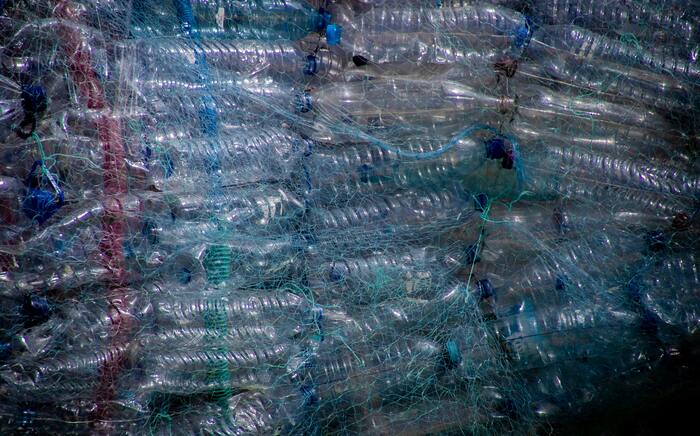Alternative plant-based materials With the agri-food industry increasingly promoting its “farm to fork” approaches, the fashion sector seems to be following in its footsteps, with an approach that could be described as from “plate to closet,” with so many innovative plant based materials that would be typically found at the table. Vegetizing fashion The last five years have seen an array of fruits and vegetables used to create emerging materials: Banana fiber from the banana plant is a popular choice to enrich the range of natural materials, and is particularly resistant. A standard-bearer for this new generation of materials, Ananas Anam extracts the fibers in the leaves of pineapples grown for consumption, transforming them into felt that is then covered with a coating partially made from corn. Ananas Anam not only produces the material, but also uses its production residues as fertilizer or biofuel, in order to optimize every last gram of biomass.
The range of possibilities is vast, as we are now seeing materials produced from kombucha or seaweed passing the pilot project stage.
Natural composites Mirum® combines agricultural waste such as powdered cork, coconut fiber, soybean oil and latex rubber. It contains no petrochemicals, nor synthetic binders or polyurethane coating. A clever combination of recycled agricultural by-products, this material from Natural Fiber Welding can be used for leather goods, footwear or the auto industry. On the clothing side, Agraloop™ is a fiber-processing technology that transforms hemp, linseed, and the stems and leaves of edible and medicinal plants into artificial fibers that combine softness and eco-quality.
Mid-way between synthetics and naturals Some solutions offer an improved version of artificial leathers made from hydrocarbons, with an increase in bio sourced content. These materials have a textile, cotton or polyester base, that may or may not be recycled, covered with a bio-sourced polyurethane, produced from grape marc for Vegea®, apple residues for Appleskin®, recycled corn kernels from Viridis® or cactus leaves for Desserto®. A means of pursuing research into green chemistry, using agricultural waste instead of the typical petrochemical components. So far, the formulas are not entirely bio[1]sourced and are still blended with fossil fuel resources, in order to obtain materials that meet the exacting standards of the clothing and accessories industry.
Root material
The innovation that is currently capturing a lot of attention lies in the root network of mushrooms. The mycelium, a fibrous network derived from the substrate of a fungal culture, can take on the appearance of felt and has the advantage of being thermosettable, shock-resistance, breathable and water repellent. Agricultural waste or cotton cellulose act as enzymatic catalyzers for these cultures, which develop a dense mat of interconnected cells. This transformation requires specific humidity and temperature levels in order to encourage the development of these fungal mosses. The mycelium mat can then be stabilized through a tanning process or finished with a coating produced from green chemistry, then embossed to give a grain to the finished material. They are not a miracle solution as these materials remain at the innovation stage for now, sowing the seeds for the materials of tomorrow. Between promising laboratory research and pilot projects, there is a long way to go before these solutions become widely available. The fashion industry will have to be patient and develop alongside these innovative technologies.
So how can we analyze the various solutions and identify the game-changing idea from the ecological damp squib?
Create an industrial symbiosis Given that some agri-food products can generate up to 60% non-usable residue, a number of solutions are already focusing on this unexplored biomass. Some materials are already heading in the right direction, but the first requirement is to check the origin of the agricultural resources. The possibility of creating new materials should not lead to another source of land[1]use pressure, with the conversion of land already dedicated to the agri-food industry, the use of GM crops or resorting to deforestation to grow plants that could be more profitable. In no way would this be a responsible operation, whether from an environmental or a social point of view. Instead, industrial symbiosis is the name of the game, establishing collaborative networks between industries, encouraging cooperation between the agri-food and materials research sectors, with textile innovations being produced from secondary raw materials. These materials will form part of the circular economy, in order to optimize all resource use and thus reduce the ecological footprint. Question percentages and characteristics
To describe a material as a responsible innovation, it must demonstrate a major improvement over standard alternatives, notably with regard to the percentage of biomass, the type of chemical processing (addition of solvents, plasticizers, etc.) or mechanical processing involved in its development, its breathability, water-repellent properties, and more. Plant-based materials can often promote their biodegradability, but while this may be true of the raw material, can the same be said of the finished material? If it is truly biodegradable, then what conditions are required to achieve this?
Test resistance and durability
Often recommended to replace leather or artificial leather, these materials must primarily be chosen for their characteristics, properties or look, being selected deliberately and carefully and not by default! Their robustness must be examined. Physical and mechanical tests will establish the performance and durability of the material in question, with regards to its production, processing and use, by testing its tensile strength, flexibility and rub-resistance. This is in order to produce footwear or leather goods that do not repeat the cracking and wearing out that was seen in earlier generations of polyurethane or PVC products.
FOCUS How can we rethink waste?
By adopting a circular approach to raw materials, with the repurposing of agri-food and cosmetic residues. Optimising resources to reduce the pressure on arable land and diversify sources. Many options are available • Cupro® made from cotton linter, the residue from the production of cotton oil, and now manufactured in a closed circuit, reusing water and the copper and ammonium solution used to produce the fibre. • Artificial materials made from cellulose pulp extracted from citrus residues after the production of juice, or from hemp residues. • Fibres with greater strength, from banana leaves and stems, or the leaves of food[1]grade pineapples. • Papers produced from waste generated by the production of textiles from hemp or nettles.
INNOVATIONS Food waste upcycling
The key materials of the Summer 2023 season stem from a veritable cornucopia. The appetite for novelty is here balanced by the exploration of co-products from the agri[1]food industry. Residuals of all kinds nourish supply diversification in the sector and intensify exploration of the science of materials. Neo-materials from the agri-food industry Cottons and wood cellulose, which are under pressure, are leaving the field open to newcomers to ensure maximum optimization of all resources extracted from the soil. Initially grown for food, bananas, pineapples, oranges or grapes will be analyzed down to their slightest characteristics in order to extract rich possibilities from their by products. Developed into knitwear, silk or linings, artificial neo-materials rely on industrial symbiosis to let the flow of resources circulate. Knowing that 1kg of fruit can generate up to 1.5kg of agricultural waste, we transition from an approach of extracting materials to an approach of valorizing the slightest fiber. A way of allowing farmers to create additional income with the resale of by-products while reducing the pressure on the soil
Fruits, hemp & marine leathers…
Frutfiber™ by Pangaia recovers and extracts fibers from banana and pineapple leaves that were originally left to decay or were burned after harvest. Mixed with bamboo Lyocell, these celluloses are produced in a closed circuit with reused water and solvents. To perfect the fabric, finishing is done with Pprmint™. Derived from steam[1]extracted peppermint oil, without solvents or chemicals, this antibacterial and anti[1]odor treatment lets the garment stay clean longer and spaces out washings. Agraloop Biofibre™ also collects crop waste as a source of new fiber. This season, these innovative regenerated celluloses explore residues of hemp seed oil. Hemp adds soil-regenerating qualities (from the natural removal of heavy metals and chemical residues) to Circular Systems’ virtuous technologies that reuse treatment water and give new life to solid waste as fertilizer. Leather is not overlooked, with proposals that also recycle by-products from start to finish. Specialized in marine leathers from the food industry, Ictyos is pushing limits with its new tanning solutions. The Lyon-based company is using its know-how to develop vegetable tanning products derived from grape mills or beer brewing residues. This approach is particularly effective since these extracts act as both tannins and colorants while providing salmon skins with unprecedented softness and suppleness.
Source: https://member.premierevision.com/livre_blanc/PremiereVision_FASHION-and-SUSTAINABILITY_1.pdf?

 Back to Blog
Back to Blog











